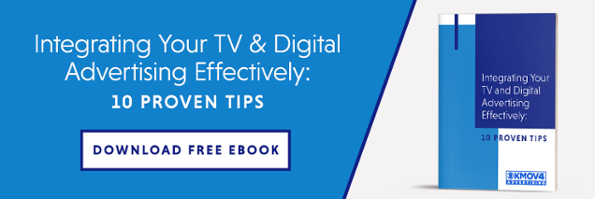
In 2017 Intel launched a marketing campaign with the message “Experience What’s Inside.” Even though this was the company’s official slogan, it was not mentioned on their website or social media channels. In fact, the website and social media pages used their own slogans and even had their own coloring and shading around the company logo. This confused customers and led to potential lost sales, all because Intel did not incorporate integrated marketing into their marketing campaigns.
Integrated marketing views marketing as a big, interconnected picture, and it is critical to building a successful campaign. Yet it can be hard to connect all of the parts of your marketing campaign with your overarching theme. Here is a closer look at what integrated marketing is, and how you can use it to make your marketing more effective overall.
What is Integrated Marketing?
Integrated marketing is a unified approach to marketing. It views the buyer’s journey from the first mention of your product or service all the way through to the final purchase, across multiple platforms and channels, and works to keep the branding message the same through careful collaboration.
Integrated marketing centers marketing tactics around the customer, targeting the marketing method to the customer’s needs and ensuring consistency. Whether a customer interacts with you on your website or social media channels, sees an ad on television or hears it on the radio, the message is consistent and unified.
Successful integrated marketing creates a cohesive plan that considers the budget, target market, marketing channels, and branding goals. It also considers the ultimate goal, whether it is increased foot traffic, brand awareness, or increased sales. All of these areas must collaborate to achieve marketing success.
Taking a look at a campaign that does this well is a better way to understand integrated marketing. When Coca-Cola started adding names to its bottles, it launched the “#ShareaCoke” campaign. After carefully selecting a target audience, Coca-Cola aimed to create a unified message to reach them with the offer of sharing their favorite drink with someone.
This campaign was unified across all platforms, including display ads in stores, outdoor advertising, digital advertising, social media campaigns, and television. Everywhere people looked, they were invited to find their name or find someone to share their Coke. The campaign was highly successful, resulting in a 7 percent increase in Coca-Cola consumption with the target demographic.
DirecTV had a similar response to a carefully integrated campaign. In 2014, after losing 28,000 subscribers, the satellite giant launched its alter ego campaign. The campaign showed celebrities and athletes happy and successful with DirecTV or sad and run down with cable. These ads showed up on television, online, and print marketing materials. The alter ego idea gained so much popularity that it sparked a number of memes that are still going strong. DirecTV has seen excellent results as well, gaining 149,000 followers after launching the alter ego campaign.
Why Should You Care About Integrated Marketing?
When you invest the time and effort into building an integrated marketing campaign, all channels of your business start working in a unified way to achieve your goal. This gives your company a sense of professionalism that can lead to an increase in consumer trust. It guides the customer through the buyers journey with multiple marketing materials that work together to support your objectives, not against each other.
Integrated marketing helps you save money because your content is repurposed in multiple ways across different channels. When one channel starts building popularity, you can use it to lead the consumer from one medium to another. If the message is cohesive and speaks to your target audience through integrated marketing, they will naturally make the desired action. All along the way, your message is reinforced to potential customers.
The bottom line is that integrated marketing is both efficient and effective at getting your marketing message to your target audience. In traditional marketing, about 65 percent of the content produced is wasted. With integrated marketing, your team can work together to avoid unpurposed content with a strategy that encourages collaboration and seeking mutually beneficial goals.
Integrated marketing requires a careful look at the buyer’s journey, then strategic planning of all marketing channels to guide the buyer successfully through that journey. These efforts can be strengthened through a partnership. Media companies offer expertise and insight into this process to assist your company with coming up with an efficient and effective integrated marketing strategy that can fuel your next successful marketing campaign.



